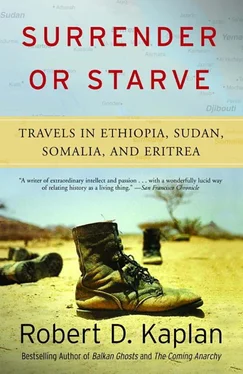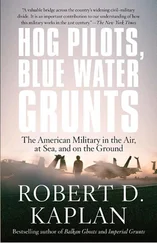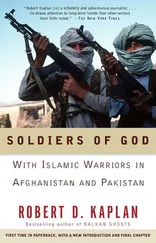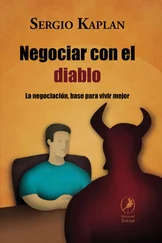One would have to search far and wide for another issue on which official Washington appears as unknowing of the facts on the ground as in the case of Eritrea. Ironically, this ignorance continues despite the recent media attention lavished on the Horn of Africa, at a time when undermining Soviet client states in the Third World is particularly in vogue. But it is easily explained. No U.S. government official has visited the EPLF base area because the United States still recognizes Ethiopian sovereignty there, and so few correspondents of major U.S. media have made the trip that the amount of secondhand information available to people in Washington is incredibly sparse. A handful of analysts with access to satellite photographs at the State Department, the Defense Intelligence Agency, and the CIA are knowledgeable of the EPLF’s military capacity. But even they lack a feel for the organization’s ideology and the way in which the guerrilla’s and their leaders view the world and the superpowers.
A senior Reagan administration official admitted that “the general view held about the guerrillas is not an educated view.” People in Washington see “these guys as leftists and as essentially separatist, while groups like the Contras are attractive because they openly declare an intention to topple a communist government.” The official said that few in Washington realize that in terms of U.S. interests a “separatist” struggle in Ethiopia may be just as effective.
Nonetheless, the Marxist seal affixed to the Eritrean guerrilla movement is so easily disputed that it may be just a Washington excuse for inaction. The State Department and the White House are not under any pressure from any quarter to reevaluate their basic assumptions, so they don’t. Why formulate a new policy if the current one is not under attack? One would expect Soviet involvement in such a populous and strategically placed country as Ethiopia, coupled with a record of human rights violations by the government with few precedents in Africa, to shake the U.S. bureaucracy out of its inertia. But the media are uninterested and no influential lobbies are at work. Although the tactics the United States uses in some parts of the world are the subject of endless scrutiny, often sparking official debate, other equally strategic regions are strangely ignored. (The U.S. role in Angola, which is of no greater strategic value than is the Horn of Africa, has been written about extensively.)
Although the Ethiopian famine resulted in lengthy public discussions about relief policy, little interest was stirred up about the administration’s overall strategy in the Horn. The upshot, incredible as it may seem, is an official U.S. posture based on a 1950s situation when there was a pro-U.S. regime in Addis Ababa with a growing separatist movement in Eritrea that was encouraged by the Soviet Union and was oriented heavily toward the Arab world. This situation threatens Israel’s fragile, newly born right of passage in the Red Sea and the construction of U.S. military facilities in Massawa and Asmara. Not much else would explain the U.S. government’s defense of the Dergue’s claim of absolute sovereignty over all of Eritrea. U.S. diplomats retort that despite Moscow’s gridlock on the Dergue, the United States still can count the mass of Ethiopian people as its friends, so why alienate a population by recognizing its enemy? Besides, giving military support to one of the two sides in the Eritrean war only could add to the suffering, and encouraging the territorial dismemberment of any country is a destructive policy.
These are fine words, except that in the opinion of many, if not most, Amharas, the enemy is not the Eritreans but the Dergue. Not that it really matters. There is no case of a Third World dictatorship, assisted to such a large degree by the Soviet and East German security services, being dislodged by the popular will. As the Soviets proved in the late 1970s, the road to influence in Addis Ababa runs through Eritrea. Furthermore, in a military sense, Ethiopia is already a divided land, and giving the guerrillas defensive weapons would probably decrease the suffering, rather than increase it. Granted, these arguments may not be without flaw, but they certainly are worth a public debate.
“The Amharas are slaughtering our people, and the bombs of their MIGs and the shells of their tanks are burning our fields. Such is the situation. Why is everyone quiet? These are the things I want to know….America must stop the flow of Soviet weapons.” It was not what I expected to hear from a sixty-five-year-old Moslem peasant woman. According to media accounts, she should have been talking about the drought and the sacks of grain from abroad that saved her family from starvation. But this woman’s home village, Af-abet, forty miles north of Nakfa, at one point had been overrun by the Ethiopian army, and the place where she lived now, Adishek, much closer to Nakfa in the EPLF zone, was so near to the front line that built into a low ridge were little corrugated iron bunkers for the chickens. Her world was one of war and ethnic hatred. Although grain from the United States was feeding her village, the gift of food wasn’t on her mind when she spoke to me—guns were. She was no fighter, just a helpless peasant.
Although not sponsored by the Reagan Doctrine, Eritrean guerrillas nevertheless have managed to tie down and bleed a 300,000-troop, Soviet-supported, black African military that otherwise would be a threat to all of East Africa, especially Kenya and Somalia. These are vital U.S. allies offering base facilities to the U.S. Indian Ocean fleet. Yet few members of the U.S. public even have noticed.
The most recurring vision I have of Eritrea is, paradoxically, not one that I myself saw. It was described to me by a British colleague, John Murray Brown. He was sitting outside one night when he noticed an EPLF guerrilla, lying on his back, searching the starscape. Brown asked the soldier if he were looking for anything in particular. The soldier replied that he was looking for satellites, claiming that they were easy to pick out in the clear night sky. The satellites gave him comfort, the soldier explained; they meant that at least somebody somewhere was paying attention to the war.
TIGRE: EXILE AND REPATRIATION
The Mercedes truck staggered up one hill and down the next, bucking the field of craters that passed for a road through the brush. The glare of the headlights was diffused by thick clouds of dust kicked up by the wheels of all the trucks in front of us: even with the windows shut it was like crawling up the wrong end of a vacuum cleaner. Everyone sweated and coughed. I held a damp rag over my nose and mouth. The sound of grinding gears helped to drown out the loud, scratchy music that the Tigrean driver insisted on playing.
After several hours of driving, the convoy halted. With the help of a half moon and starlight, I was able to get my first good look at the northern Gondar, which the TPLF was using as a corridor into Tigre from its rear base on the Sudanese border. It was a ghostly landscape; the ravages of war and drought had left only shadows behind. Every object in view looked shriveled and burned like the remnants of a house after a great fire. The plain was dotted with carob and acacia trees, but all the branches were completely bare; it might as well have been a field of skulls. The grass was dead, and the lack of topsoil made the ground a vast carpet of dust.
Out from behind the rocks and crevices emerged little groups of men and women dressed in khaki shorts with Kalashnikov assault rifles slung over their shoulders like picks and shovels. Some wore bandage-like cloths on their heads as turbans. Their low chattering in Tigrinya had the effect of hundreds of birds waking. We now were an armed convoy of about twenty grain-laden trucks completely financed by U.S. taxpayers and protected by a group of self-declared Marxist rebels.
Читать дальше












